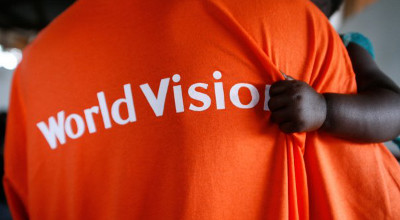Lack of Strategy, Funds Puts AIDS-Free Initiative in Jeopardy
World Vision, a leader in the worldwide battle to eradicate HIV and AIDS in children, has challenged the United States to come up with a more actionable strategy to combat the deadly disease.
The humanitarian organization said the U.S. must get funding back on track to sustain the significant progress made to reach goals for zero new HIV infections and an AIDS-free generation. With the International AIDS Conference coming up in Washington, D.C.—the first time the conference has been held in this country since 1990, U.S. funding to battle AIDS is at is lowest levels since 2007.
A recent United Nations report revealed that new HIV infections have been reduced by 21 percent since 1997, and deaths from AIDS-related illnesses decreased by 21 percent since 2005.
“With new HIV infections and AIDS-related deaths at their lowest levels since the peak of the epidemic, this is the first time we come to the International AIDS Conference on the cusp of beating this disease, said Adam Taylor, World Vision U.S.’s vice president for advocacy. “The U.S. government has been instrumental in reversing the global impact of HIV and AIDS, and must continue to ‘fight until we reach zero’ by staying on course with funding commitments and developing an actionable strategy for reaching an AIDS-Free Generation.”
To truly “turn the tide” on the HIV epidemic, World Vision believes countries must stay on course with their HIV and AIDS funding commitments and step up support for orphans and vulnerable children. The U.S. is significantly behind its five-year funding commitment since the 2008 re-authorization of the President’s Emergency Plan for AIDS Relief (PEPFAR).
World Vision urged the government to provide PEPFAR with at least $4.6 billion in fiscal year 2013, as well as $1.65 billion for the Global Fund to Fight HIV and AIDS, Tuberculosis and Malaria to meet the $4 billion pledge.
In addition to life-saving investments in the Global Fund, PEPFAR has been one of the most successful initiatives in turning the tide of the HIV epidemic providing:
- Life-saving treatment to almost 4 million men, women and children.
- Care and support to more than 4 million children left orphaned and vulnerable by HIV and AIDS.
- Access to HIV counseling and testing to nearly 10 million pregnant women.
According to the World Health Organization and UNICEF, 1.3 million children need HIV treatment now, but only 28 percent receive it, and 800 HIV-positive children die each day due to lack of access to treatment and care.
World Vision’s current HIV and AIDS strategy aims to mobilize the commitment, capacity and resources needed to scale up integrated family-focused and community-based approaches that will reduce the impact of HIV and AIDS on children. Each year, World Vision reaches one million orphans and children vulnerable to the effects of AIDS.














































